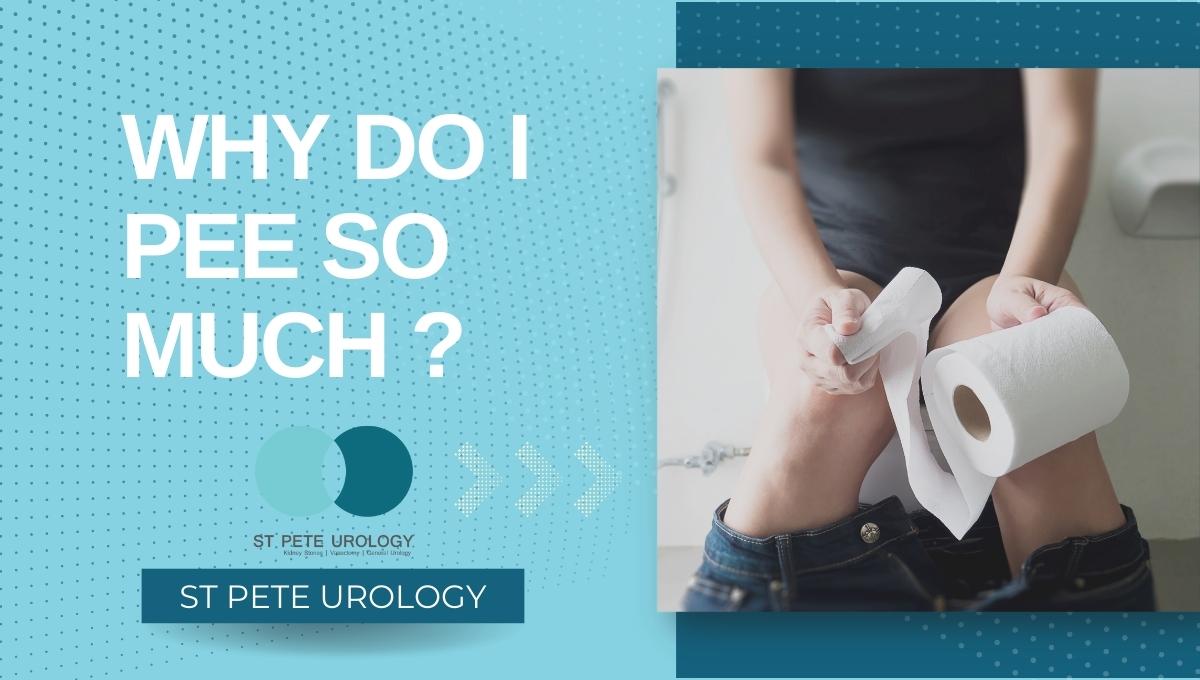Discover the most effective over-the-counter treatments for UTI symptom relief, from phenazopyridine to D-mannose. Learn when OTC options help and when professional care is essential.
Continue readingWhy Do I Keep Getting UTIs? 5 Hidden Causes and How to Stop the Cycle
Discover why you keep getting UTIs and learn evidence-based prevention strategies from board-certified urologists at St Pete Urology in St. Petersburg, FL.
Continue readingPreventing Recurrent UTIs: Strategies That Work
Learn how to prevent recurring UTIs with 7 proven strategies from St Pete Urology’s experts. Discover lifestyle changes, natural supplements, and medical options that work.
Continue readingWhy Do Some Women Get UTIs Repeatedly?
Discover why some women experience recurrent UTI episodes and learn evidence-based prevention strategies. St. Pete Urology explains causes, risk factors, and effective treatments for chronic UTIs in women.
Continue readingAre UTIs Common and How Can They Be Effectively Treated?
The Role of Diet in UTI Prevention and Treatment
Does your diet affect UTI?
Why Do I Pee So Much
What Causes a Urinary Tract Infection?
 Urinary tract infections, or UTIs, can be diagnosed based on either symptoms or a urine sample test. The good news is that most urinary tract infections can be cleared up in 2 or 3 days of treatment. When the bacteria of the genitourinary tract are out of balance, there is more opportunity for micro organisms like E. coli to thrive. Here are some causes of UTIs:
Urinary tract infections, or UTIs, can be diagnosed based on either symptoms or a urine sample test. The good news is that most urinary tract infections can be cleared up in 2 or 3 days of treatment. When the bacteria of the genitourinary tract are out of balance, there is more opportunity for micro organisms like E. coli to thrive. Here are some causes of UTIs:
- Difficulty with being able to empty the bladder completely
- Bowel incontinence
- Kidney stones
- Diabetes
- Poor personal hygiene
- Some types of birth control, including spermicides
- Use of tampons
- Frequent and/or intense sexual intercourse, especially with new partners
- Pregnancy or menopause
- Having a catheter
- Long-term immobility
- Suppressed immune system
- Prolonged use of antibiotics
If you believe you have a urinary tract infection, you should see a doctor as soon as possible for treatment. While most UTIs aren’t serious, they can be very painful and they can also develop into more serious problems such as kidney infections.
Symptoms that might indicate a UTI include:
- frequent or strong urges to urinate
- cloudy, smelly or bloody urine
- burning pain when urinating
- nausea and vomiting
- muscle aches in the lower back and abdominal pains
Prevention is preferable to treatment, and these practices can reduce your risk of developing a UTI:
- Drink plentiful amounts of water and urinate frequently.
- Avoid alcohol and caffeine, as they can irritate your bladder.
- Urinate before and shortly after sex.
- After using the toilet, remember to always wipe front to back.
- Shower instead of taking baths.
- Consume cranberries. While cranberry extracts don’t actually treat UTIs, they are effective in reducing your risk of recurrent UTIs. Try cranberry extract tablets, which can be twice as effective as drinking cranberry juice.
- Regularly taking probiotics, especially after completing a course of antibiotics, may lower your risk of UTIs.
- Be vigilant about keeping the genital area clean.
- Choose cotton underwear and loose-fitting clothing.
Diagnosis and Treatment
Consult with your doctor if you develop symptoms of a urinary tract infection. Diagnosis includes assessing symptoms and following up with testing a sample of urine to analyze counts of bacteria, white blood cells and red blood cells. Since UTIs happen due to an imbalance of bacteria, the most common treatment is antibiotics or antimicrobials.
Prescription or over-the-counter pain relief meds can alleviate pain. You also can try putting a heating pad on the abdomen or back.
If you think you have a UTI, you may wish to contact St Pete Urology for a consultation. For more information, visit the St Pete Urology website or make an appointment with one of our board-certified physicians.
Why Do I Keep Getting UTIs?
Causes of recurrence
A case of UTI is said to be recurrent or persistent if a patient contracts at least four infections in a period of one year. Recurrence of UTIs occurs almost solely among women. Other than the positioning of the urethra in their bodies, this recurrence may be caused by factors such as:
1. Failure to complete a dose of antibiotics. Once the benefits of taking the prescribed antibiotics start to manifest, some patients stop taking the drug because they think the UTI has cleared. Urologists discourage this behavior and advise patients to complete the dose to reduce the chances of any left over bacteria causing a recurrence.
2. Sex is a risk factor. Sexually active women face a higher risk of contracting a UTI because of the transmission of bacteria during intercourse. The risk can be reduced by urinating before and after sex or by taking an antibiotic before or after sex if a doctor prescribes it.
3. Post-menopausal hormonal changes. Menopause lowers estrogen levels in women causing an imbalance in the bacteria in the vagina. This makes women susceptible to infection and recurrence. A urologist can prescribe a vaginal estrogen cream to remedy the problem.
Women are genetically predisposed to contracting UTIs, both because of their anatomy and hormonal changes as they get older. But UTIs in women are highly treatable and are only rarely very serious. If anyone experiences persistent infections, she should seek the advice of expert urologists, such as those found in St. Pete Urology. The experienced specialists at St. Pete Urology can offer consultation, diagnosis and treatment for any UTI problems. For more information, visit the “St Pete Urology” site.








 If so, you need immediate antibiotic treatment—
If so, you need immediate antibiotic treatment—
 Diet is generally critical in the prevention, treatment and recovery from urinary tract infections (UTIs). Some diets boost immunity and protect against UTIs while others reduce irritation in the urinary tract and hasten the healing process. Still some diets help to shed off bacteria and lower the risk of UTIs altogether.
Diet is generally critical in the prevention, treatment and recovery from urinary tract infections (UTIs). Some diets boost immunity and protect against UTIs while others reduce irritation in the urinary tract and hasten the healing process. Still some diets help to shed off bacteria and lower the risk of UTIs altogether.
 Peeing can be an inconvenience when it gets more frequent and urgent.
Peeing can be an inconvenience when it gets more frequent and urgent.
